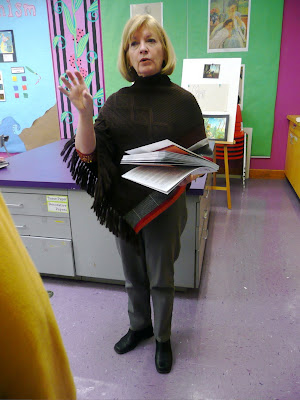Courtney Sanchez
Visual Culture Paper/ Presentation
Individual Studio/Professional Practices (ARTA 260 G)
Prof. Bruce Wall
The theme I selected for my Visual Culture paper is death masks. I chose this topic because I used a mask of my face for my project of the self portrait. I first learned to do this process in my sculpture class I took last year at the south side campus. A death mask is a wax or plaster cast made of a person’s face following death. They were used as mementos of the dead, or were used as an example for portraits.
According to Wikipedia, “It is sometimes possible to identify portraits that have been painted from death masks, because of the characteristic slight distortions of the features caused by the weight of the plaster during the making of the
mold.” A more known source of a death mask is the masks used by the Egyptians as part of mummification, such as Tutankhamon’s burial mask.
In the seventeenth century in some European countries, it was common for death masks to be used as part of the
3 dimension image of the deceased, displayed at state funerals. During the eighteenth and nineteenth centuries they were also used to permanently record the features of unknown corpses for purposes of identification. This was later replaced by
photography. For my class since we were all living we made life masks. Life masks are a very special thing to create because you don’t have to be a sculptor and it is an image of yourself you and your family can keep forever. I did not make an expression in my face when the cast was taken but , “trying- to-look-pleasant” expression is peculiarly noticeable in the life masks of Wordsworth and of Keats; although the former did not altogether succeed, which was not the fault, by the way, of Charles Lamb. Haydon describes the operation in his Journal, under date of 1815, and says: “Wordsworth sat in my dressing-gown with his hands folded, sedate, solemn, and still, bearing it like a philosopher.” But elsewhere we read that the poet was placed flat on his back on the studio floor, while Lamb capered about him in glee at the undignified absurdity of the proceedings, trying to make the subject grin at his fantastic criticisms and remarks” (undying).
The website deathreference.com states, in some cultures, mostly in African, Native American, and Oceanic tribes, death masks are considered an important part of social and religious life. Death masks facilitate communication between the living and the dead in funerary rites and they create a new, superhuman identity for the bearer. Death masks can take the form of animals or spirits, thereby allowing the bearer to assume the role of the invoked spirit or to fend off evil forces.
In some tribes death masks are used in initiatory or homage ceremonies, which recount the creation of the world and the appearance of death among human beings. For others, where the link to ancestors is sacred, they are used to make the transition from the deceased to his or her heir of the family. Death masks are also used as a tool to help the deceased's soul pass easily to the other life. The respect of the funeral rites of mask dancing can also protect from reprisals from the dead, preventing the risk of a wandering soul.
I think everyone artist or not should participate in this act! It is a quick and easy process for something that can be made into something wonderful. Rhonda LaRue a master mask maker writes, “In over 300 mask making episodes, I’ve never once had a problem and it’s always been a real treasured experience for the client and myself. But that doesn’t mean it can’t happen. I’m always conscientious and sensitive to unexpected possibilities and to the unique needs or circumstances of each individual. In my experience it’s a marvelous and great life affirming shared experience. I wish you each the same!”
Works Cited:
Deathreference.com. “Death Mask.” 10 Feb2009
Mask.html>.
Rondalarue.com. “How to make a life mask!” 10 Feb 2009
PAGES/MASK%20PAGES/how.html>.
Wikipedia.org. “Death Masks.” 10 Feb 2009 <>.
Undyingfaces.com. “Death Masks- Life Masks.” 10 Feb 2009
info/category/life-masks/>.


















